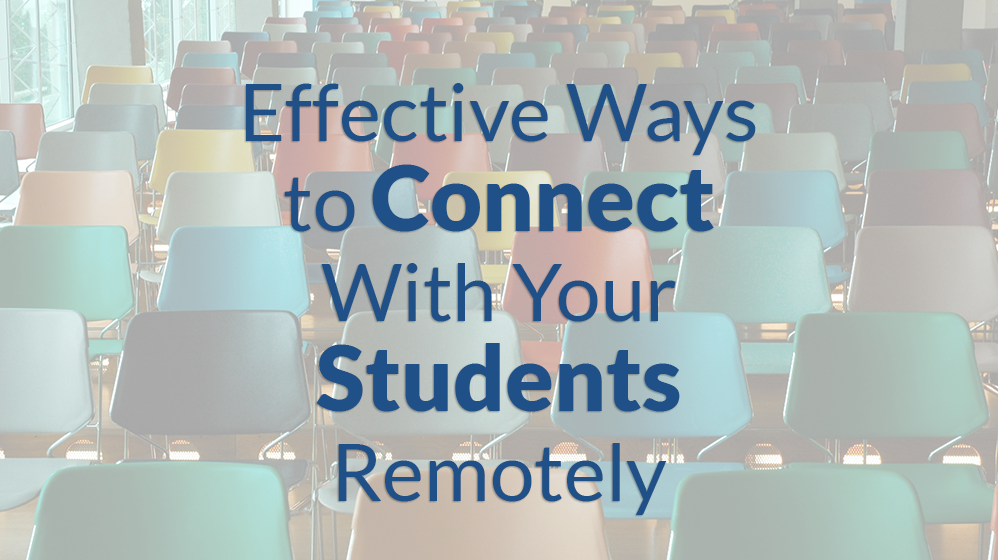In a matter of days, no, within 24 hours, the way we were teaching and reaching students totally shifted. In a matter of hours, we began planning for remote learning: developing lessons, creating materials, and constructing assessments. In the midst of creating I couldn’t help but stop and think about the social and emotional impacts this shift was going to have on our students. How do we continue to support our students socially and emotionally while still teaching to the standards? Here are two easy and actionable ways for supporting students socially, emotionally, and academically.
Two-Way Journals
One easy shift to make is to take journal writing in your classroom and make it digital. Journals can be utilized for numerous purposes. You can have back and forth conversations with students to build up their writing skills by providing:
- Video mini-lessons and writing prompts.
- Individualized instruction through sharing mentor texts of your own writing and others.
- Dialogue with students on their writing through feedback and teaching next steps.
- Formatively assess students’ writing.
- And most importantly, continuing to build relationships with your students.

Google Docs and Google Classroom allow you to create journal templates and share individual journals with each student. Also, tech tools like Screencastify, Flipgrid, and Seesaw allow students to not only do written journals, but also add video to journals as well. Here are a couple of other quick tips to consider:
- Identify your purpose for the journals. Do you want to develop students’ writing skills? If so, pick which skills you would like to focus on.
- Be clear with your expectations. Provide your students with a rubric and/or mentor texts along the way.
- Consider incorporating a reflection piece into journal entries. Students can reflect on their day, provide us feedback on how their remote learning is going, self-assess their own writing and skills, or give us some insight into writing skills or techniques they were attempting while writing.
- Develop a schedule for how and when you will give feedback. Don’t overwhelm yourself by feeling you need to respond daily. Make a goal to respond to 2-5 students a day and be consistent with the way you are giving feedback.
- Think about how you’re giving feedback. Think about always sharing one compliment with students and then sharing one teaching point. Having students reflect on their writing can and should help you identify that teaching point. Your teaching point could be a mini video lesson, a mentor text, or a quick explanation. Keep it simple.
Collaborative Conversations
Just because we are not in our classrooms right now doesn’t mean that we can’t have class discussions. Free online resources such as Zoom, Google Hangouts, and Parlay provide opportunities to not only have a live video and chat with your classes, but also provide some structures for making conversations more meaningful and purposeful. Here are some ideas for getting students talking collaboratively:
- Online resources like Parlay have engaging, high-interest topics for getting students talking on every and any topic imaginable. Students can have roundtable discussions or even live socratic seminars.
- Put in place structures for online class discussions. Provide students with some sentence starters for elaborating (I also think… I would add…), asking questions (Why do… What do you…), clarifying (Did you mean… I think you meant…), encouraging others to talk (Student’s name, what do you think?), or disagreeing respectfully (I see what you’re saying, but…). And then, develop a system for how students will take turns speaking, such as holding up 2 fingers when they have a question, 1 finger if they want to disagree respectfully, and so on.
- Think about turning Zoom or Google Hangout calls into a game. Come up with a system for keeping score. You can keep score when each student talks or put a student in charge. Here’s an example…
- Elaborating= 3 points
- Asking a question= 1 point
- Disagreeing respectfully= 4 points

As we know, each day is bringing us new challenges, and many uncertainties regarding what the future will hold. Therefore, connecting with your students is more important now than ever. But, also, reaching out for help, support, and collaboration within and outside of your district is even more imperative. You are not alone in this journey. Please do not hesitate to reach out and ask for support from your fellow educators. Share resources, share ideas, and support each other in every way we can. Help is only an email or call away.
Educators, how are you adjusting to this new reality?
Feel free to share how you are adjusting and helping to support students and teachers from afar in our comments section.






